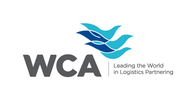

C18u—U.S. Country of Origin Marking Requirements
Subscriber price: $56.00, Non-subscriber price: $73.00
Estimated total study time: 4 hours 8 minutes
![]()
This course focuses on the complex U.S. Marking Requirements of Imported Goods, the difference for goods produced in a USMCA Country. It is geared to assist importers to avoid marking penalties and U.S. producers will learn procedures to determine the country of origin for marking purposes to complete documentation requested from their customers.
Rules of Origin Determine Country of Origin
Throughout this course we will discuss how to determine and mark products with the proper country of origin, certain items that require special marking, and those that require no marking at all. Improper marking and illegal removal of marking can result in problems at the time of customs release and depending on the severity of the situation, punishment by fines and/or imprisonment.
Rules of origin are necessary in order to determine the country of origin of an article. Rules of origin may differ when preferential treatment for certain trade agreements is involved. This course In this lesson we point you in the direction of the rules of origin for preferential and non-preferential treatment and touch on substantial transformation.
(Estimated study time: 47 minutes)
- Introduction
- Rules of Origin Determine the Country of Origin
- Goods Produced in a Single Country
- Goods Produced in Multiple Countries
- Rules of Origin for Preferential and Non-preferential Treatment
- Rules of Origin for Non-Preferential Duty Rates
- Preferential Rules of Origin
Marking the Product with Country of Origin
Once the proper country of origin is determined using the rules of origin, it must be marked on the product. In this lesson we address marking the country of origin on all finished goods. This will include the best forms of marking the product, how and where it needs to be shown.
(Estimated study time: 33 minutes)
- Introduction
- Marking the Country of Origin on the Product
Exceptions to Marking
In this lesson we discuss the goods that are exceptions to the country of origin marking requirements. This includes articles on the J-list or those purchased by the ultimate consumer which are not intended for resale. In addition we mention other articles that CBP considers acceptable such as articles that are either too old, too delicate, or too expensive to mark.
(Estimated study time: 44 minutes)
- Introduction
- Goods that are Not Required to be Marked
Special Marking and Labeling for Certain Articles
In the first portion of this lesson we discuss the special marking requirements for certain imported articles. Then we discover that the country of origin is not always the only thing required, some products also require additional labeling before they can be imported.
(Estimated study time: 1 hour 20 minutes)
- Introduction
- Special Marking for Certain Articles
- Special Marking Exceptions for Souvenirs
- Articles from Different Countries Packaged Together
- Items Received as a Gift
- Containers that Hold Merchandise
- Articles to be Repacked in the US.
- Special Marking Considerations for Point-of-Sale Packaging at Retail
- Marking of Watch and Clock Movements, Cases and Bands
- Marking for Hand Tools, Utensils, and Native American Articles
- Marking Vacuum Containers, Compressed Gas Cylinders and Parts
- Marking for Pipes and Pipe Fittings
- Marking for Manholes and Parts
- Special Labeling Requirements
- Products that require special labeling
- Labeling Requirements for Textiles, Fiber, and Wool Products
- Labeling Requirements for Fur
- Marking and Labeling Requirements for Food and Drug-Regulated Products
Consequences of Goods Not Legally Marked and Best Practices
In the lesson before you, we discuss the consequences of goods that are Not legally marked. We will also discuss the options the importer has upon learning that his goods are not marked properly so that he doesn't suffer the consequences. Then we will talk about best practices to use to avoid potential marking problems.
(Estimated study time: 43 minutes)
- Introduction
- Consequences At or After Import for Goods that are Not Legally Marked
- Options for the Importer Upon Discovery of a Marking Discrepancy
- Best Practices for Importers to Determine Country of Origin